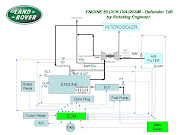
I encourage you to pick up a pen and a piece of paper and jot down the goals you want to reach. Look at each goal and evaluate it. Make any changes necessary to ensure it meets the criteria for a SMART goals:
S = Specific
M = Measurable
A = Attainable
R = Realistic
T = Timely
Specific
Goals should be straightforward and emphasize what you want to happen. Specifics help us to focus our efforts and clearly define what we are going to do.
Specific is the What, Why, and How of the SMART model.
WHAT are you going to do? Use action words such as direct, organize, coordinate, lead, develop, plan, build etc.
WHY is this important to do at this time? What do you want to ultimately accomplish?
HOW are you going to do it? (By...)
Ensure the goals you set is very specific, clear and easy. Instead of setting a goal to lose weight or be healthier, set a specific goal to lose 2cm off your waistline or to walk 5 miles at an aerobically challenging pace.
Measurable
If you can't measure it, you can't manage it. In the broadest sense, the whole goal statement is a measure for the project; if the goal is accomplished, the is a success. However, there are usually several short-term or small measurements that can be built into the goal.
Choose a goal with measurable progress, so you can see the change occur. How will you see when you reach your goal? Be specific! "I want to read 3 chapter books of 100 pages on my own before my birthday" shows the specific target to be measure. "I want to be a good reader" is not as measurable.
Establish concrete criteria for measuring progress toward the attainment of each goal you set. When you measure your progress, you stay on track, reach your target dates, and experience the exhilaration of achievement that spurs you on to continued effort required to reach your goals.
Attainable
When you identify goals that are most important to you, you begin to figure out ways you can make them come true. You develop that attitudes, abilities, skills, and financial capacity to reach them. Your begin seeing previously overlooked opportunities to bring yourself closer to the achievement of your goals.
Goals you set which are too far out of your reach, you probably won't commit to doing. Although you may start with the best of intentions, the knowledge that it's too much for you means your subconscious will keep reminding you of this fact and will stop you from even giving it your best.
A goal needs to stretch you slightly so you feel you can do it and it will need a real commitment from you. For instance, if you aim to lose 20lbs in one week, we all know that isn't achievable. But setting a goal to loose 1lb and when you've achieved that, aiming to lose a further 1lb, will keep it achievable for you.
The feeling of success which this brings helps you to remain motivated.
Realistic
This is not a synonym for "easy." Realistic, in this case, means "do-able." It means that the learning curve is not a vertical slope; that the skills needed to do the work are available; that the project fits with the overall strategy and goals of the organization. A realistic project may push the skills and knowledge of the people working on it but it shouldn't break them.
Devise a plan or a way of getting there which makes the goal realistic. The goal needs to be realistic for you and where you are at the moment. A goal of never again eating sweets, cakes, crisps and chocolate may not be realistic for someone who really enjoys these foods.
For instance, it may be more realistic to set a goal of eating a piece of fruit each day instead of one sweet item. You can then choose to work towards reducing the amount of sweet products gradually as and when this feels realistic for you.
Be sure to set goals that you can attain with some effort! Too difficult and you set the stage for failure, but too low sends the message that you aren't very capable. Set the bar high enough for a satisfying achievement!
Timely
Set a timeframe for the goal: for next week, in three months, by fifth grade. Putting an end point on your goal gives you a clear target to work towards.
If you don't set a time, the commitment is too vague. It tends not to happen because you feel you can start at any time. Without a time limit, there's no urgency to start taking action now.
Time must be measurable, attainable and realistic.
Everyone will benefit from goals and objectives if they are SMART. SMART, is the instrument to apply in setting your goals and objectives.
Ref: http://www.goal-setting-guide.com/smart-goals.html



Tidak ada komentar:
Posting Komentar